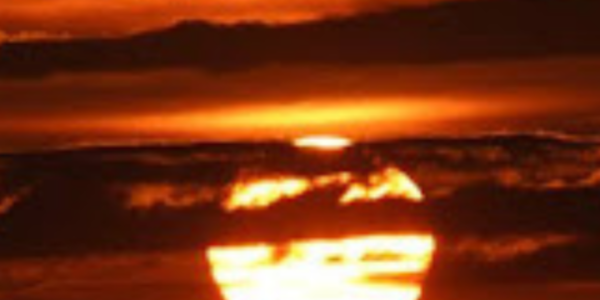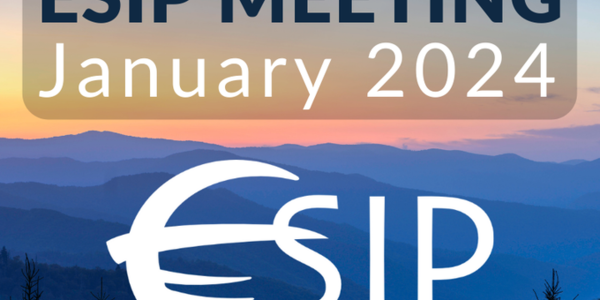
Here at NCEI, we aren’t just data—we’re people. In our Humans of NCEI series, meet the awesome minds that manage one of the largest archives of atmospheric, coastal, geophysical, and oceanic research in the world. Get to know Christiane Reiser—a Physical Scientist and Bathymetry Data Manager.
What is your job title?
Physical Scientist and Bathymetry Data Manager
What is your specific area of expertise?
I manage and archive bathymetry data collected from vessels that map the seafloor.
What was your first job? How did it prepare you for your current position?
Well, my first job ever was working with my Dad painting houses when I was just a kiddo. But the first job I had in this field was working as a survey technician onboard NOAA Ship Rainier. I learned to collect and process multibeam data in the field, which is the very datatype I archive and manage today at NCEI. My experience working offshore has especially helped me better connect with our data providers since I understand the systems they use to collect data. I can also relate to the sheer amount of effort it takes to collect these data in the field where so many conditions have to align to get quality data.
How did you end up at NCEI?
I started my scientific path at NOAA, working offshore. After several years of living on a ship year-round, I was ready to have a normal, land-based life again. So I left NOAA and went into the private sector where I made a career of collecting and processing multibeam data. Eventually, I went to graduate school and studied Science Writing at Johns Hopkins University. That led me to a very cool science writing internship at NASA. While there I saw a job posting for a bathymetry data manager in Boulder, CO. It felt like coming home when my application was accepted--not just because I grew up in Boulder, but because I was returning to NOAA where my career began.
What does a usual workday look like for you?
Most workdays involve a lot of meetings. We help data providers with advice on how to submit their data to the archive so that it becomes publicly accessible, as well as preserved. I also partake in several working groups that are focused on seafloor mapping. Our team also coordinates efforts in getting new data into the archive through our ingest pipeline. I feel very lucky because we have an exceptional team of people equally passionate about what we do.
What question are you asked most often when someone finds out what you do? How do you respond?
Most frequently, people ask "How can you be working in a land-locked state if you handle ocean floor data?" I explain that NOAA has many offices and that the bathymetry archive just happens to be located in Boulder. And thanks to various methods of data transfer and technology, we don't have to be near the ocean to do our jobs.
What sort of training and education would one need for your job?
I got a Bachelor's in Geography from the University of Colorado and a Master's in Science Writing from Johns Hopkins. I think a degree in geography is quite relevant to my job, especially since I learned a lot about Geographic Information Systems (GIS). My master's is not the traditional path one would take to becoming a bathymetry data manager, but I have found it to be key to working in the sciences. Learning how to communicate about science is invaluable. While a formal education is important, I found that most of my skills were acquired in the field, such as learning how to collect and process bathymetry data on a ship off of Alaska.
What inspired you to pursue a career in your field?
My mom worked at NOAA for 20 years, so I grew up in a NOAA household and was always drawn to the Earth Sciences. When I learned about all the fascinating adventures scientists were having in the field, I knew I wanted to try it out for myself. Before joining the crew on the Rainier, I was looking at the requirements of becoming a NOAA Corps Officer. I never actually applied to the corps, but that interest led me down the winding path to NCEI.
What projects are you working on now? Are there any upcoming projects that you are excited about?
I feel like I have my hands in many different projects and I'm excited to be able to participate in them. I'm especially passionate about the national and global mapping strategies that are ongoing. Given that we still have nearly 80% of the global seafloor left to map, these are such important initiatives. We have to bring a diverse group of people from around the world within the maritime community together to achieve these ambitious mapping goals. I'm thrilled to be part of this because the value of making a definitive map of the seafloor is so far-reaching and will impact every person on the planet in some shape or form.
What is your favorite aspect of your job?
Collaborating with members of our community in the U.S. and internationally. It's exciting to see so many brilliant people come together to work on a common goal. I learn from my colleagues every day and the more I do, the more invested I become in the work at NCEI.
What challenges have you had to deal with in your career?
One challenge we are working on now is the loads of bathymetric data we anticipate to come from national and global mapping initiatives. We have to collaborate with many parts of NOAA and the international mapping community to make sure we meet the archiving needs.
Who are you outside of your career?
As much as I love science, in order to feel balanced, I embrace my artistic side. Outside of the seafloor mapping world, you will find me hand-sewing leather journals, stabbing wool endlessly to create adorable needle-felted projects, drawing intricate designs using the Zentangle® method, or building 3D topographic wood maps of my Colorado mountains. I love to create things. I also love to cook, play board games with my wife, and relieve the stresses of life swimming laps in the pool.
Is there anything else you would like people to know about you?
About 12 years ago, I worked as an apprentice at a 300-year-old saddlery in Upper Austria. I learned to hand-sew English style dressage and jumping saddles.
Pets?
I have a three-legged pup named Gillian. She has heterochromia (one blue and one brown eye) and is the fastest dog at the dog park. She loves doing yoga with me and makes sure I get lots of kisses while in the most difficult poses.
*Please note that all of the information was current through the publication date.




